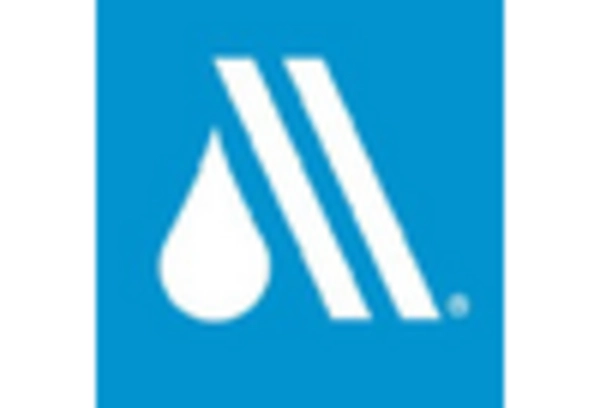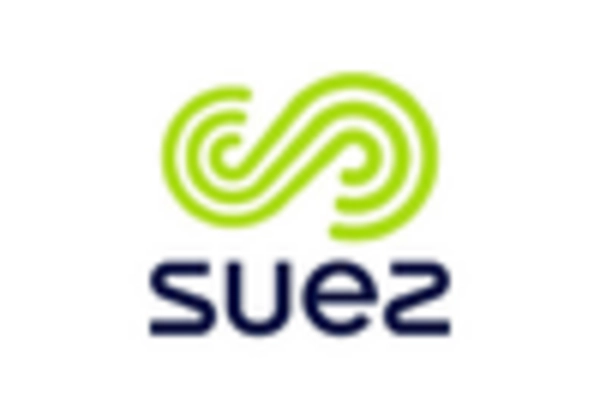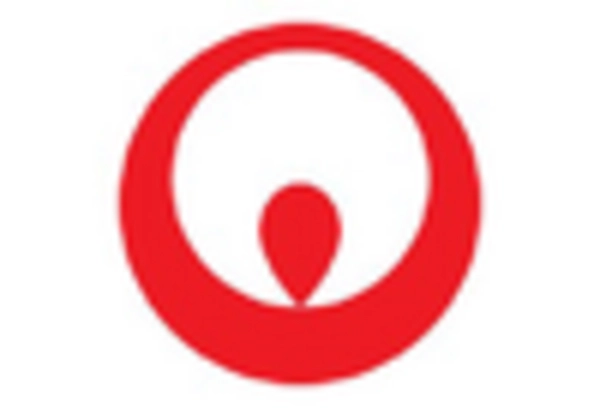The water and-wastewater-pipe market in the US is characterized by a competitive landscape that is increasingly shaped by innovation, sustainability, and strategic partnerships. Key players such as American Water Works (US), Xylem (US), and Veolia (FR) are actively pursuing strategies that emphasize technological advancements and operational efficiencies. American Water Works (US) focuses on enhancing its infrastructure through digital transformation initiatives, which aim to improve service delivery and reduce operational costs. Meanwhile, Xylem (US) is leveraging its expertise in water technology to expand its product offerings, particularly in smart water solutions, thereby positioning itself as a leader in the digitalization of water management. Veolia (FR), on the other hand, is concentrating on sustainability, integrating eco-friendly practices into its operations, which not only enhances its market appeal but also aligns with regulatory trends favoring environmental responsibility.
The business tactics employed by these companies reflect a broader trend towards localization and supply chain optimization. The market structure appears moderately fragmented, with several players vying for market share while also collaborating on various projects. This competitive environment is influenced by the collective actions of these key players, who are increasingly focused on enhancing their operational capabilities and market reach through strategic initiatives.
In October 2025, American Water Works (US) announced a partnership with a leading technology firm to develop an advanced water quality monitoring system. This initiative is expected to enhance the company's ability to ensure safe drinking water and comply with regulatory standards, thereby reinforcing its market position. The strategic importance of this partnership lies in its potential to leverage cutting-edge technology, which could set a new benchmark for water quality management in the industry.
In September 2025, Xylem (US) launched a new line of smart water meters designed to optimize water usage and reduce waste. This product introduction is significant as it aligns with the growing demand for sustainable water management solutions. By integrating IoT technology into its offerings, Xylem (US) not only addresses environmental concerns but also enhances customer engagement through real-time data analytics.
In August 2025, Veolia (FR) expanded its operations in the US by acquiring a regional water treatment company. This acquisition is strategically important as it allows Veolia (FR) to enhance its service capabilities and expand its customer base in a competitive market. The move underscores the company's commitment to growth through strategic acquisitions, which may provide it with a competitive edge in the evolving landscape.
As of November 2025, the competitive trends in the water and-wastewater-pipe market are increasingly defined by digitalization, sustainability, and the integration of AI technologies. Strategic alliances are becoming more prevalent, as companies recognize the value of collaboration in driving innovation and enhancing service delivery. Looking ahead, it is likely that competitive differentiation will evolve, shifting from traditional price-based competition to a focus on technological innovation, reliability in supply chains, and sustainable practices. This transition may redefine the competitive dynamics, compelling companies to adapt and innovate continuously.

















Leave a Comment